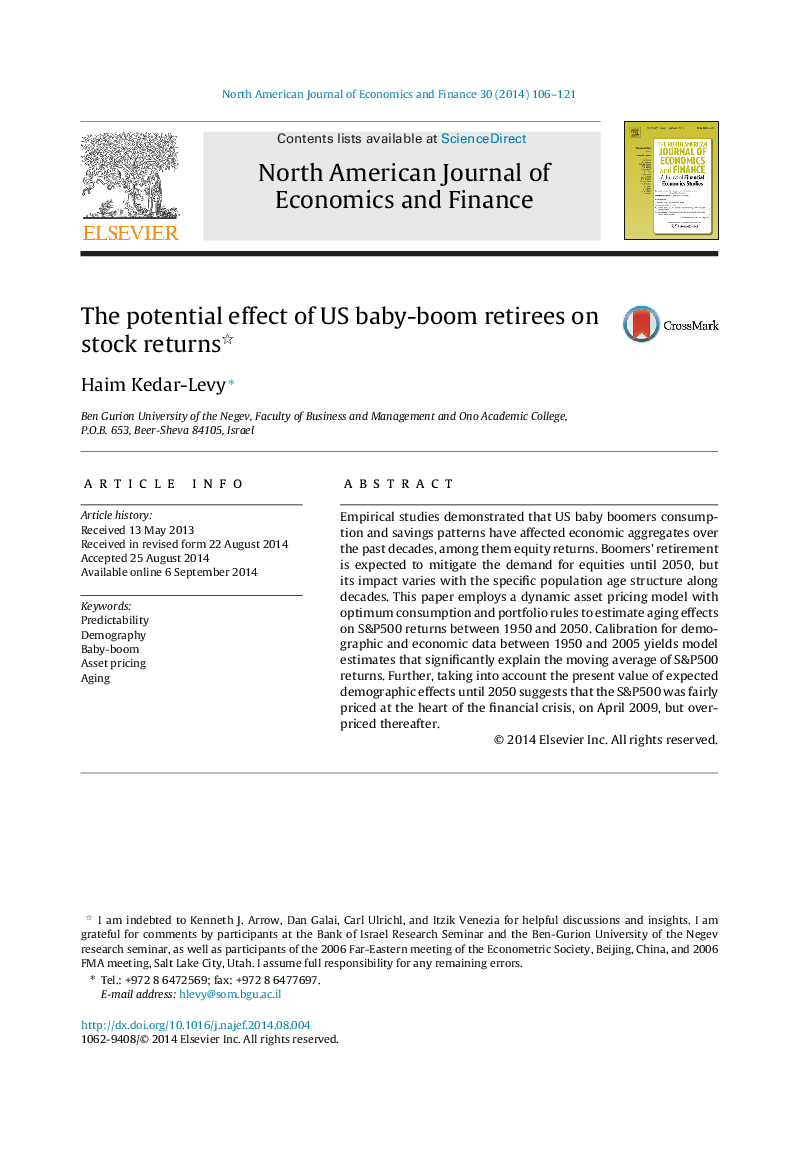| Article ID | Journal | Published Year | Pages | File Type |
|---|---|---|---|---|
| 973148 | The North American Journal of Economics and Finance | 2014 | 16 Pages |
•Baby-boomers’ impact on S&P500 returns is estimated between 1950 and 2050.•Boomers’ retirement is expected to curb S&P500 returns most around 2010, about −2.40%.•The impact is expected to decline gradually to −1.68% until 2020 and −1.41% until 2030.•Until 2020, expected aging effects would be fully priced with P/E ratio of about 14–15.•Any excess P/E ratio until 2020 implies overpricing.
Empirical studies demonstrated that US baby boomers consumption and savings patterns have affected economic aggregates over the past decades, among them equity returns. Boomers’ retirement is expected to mitigate the demand for equities until 2050, but its impact varies with the specific population age structure along decades. This paper employs a dynamic asset pricing model with optimum consumption and portfolio rules to estimate aging effects on S&P500 returns between 1950 and 2050. Calibration for demographic and economic data between 1950 and 2005 yields model estimates that significantly explain the moving average of S&P500 returns. Further, taking into account the present value of expected demographic effects until 2050 suggests that the S&P500 was fairly priced at the heart of the financial crisis, on April 2009, but overpriced thereafter.
